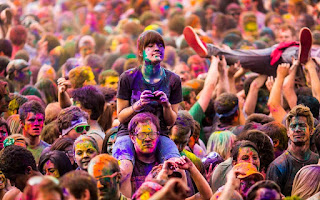The Starliner spacecraft, built by Boeing, is ready to take off on its first manned flight on Monday. It will carry astronauts from the U.S. space agency (NASA) to the International Space Station for the first time, several years after SpaceX achieved a feat. Similar.
This is the last test flight of the Starliner before it begins regular operations and is very important for the aerospace giant, whose reputation has been damaged in the last stage.
The production of the Starliner, ordered by NASA ten years ago, has suffered a series of sudden setbacks and successive postponements, which Boeing hopes to put an end to.
American astronauts Butch Wilmore and Sonny Williams are scheduled to lift off from Cape Canaveral in Florida at 22:34 on Monday (02:34 GMT Tuesday) in the Starliner capsule, which will be propelled into orbit by an Atlas V rocket. United Launch Alliance innovation.
The two astronauts, both from the U.S. Navy, had previously visited the International Space Station twice, first on a space shuttle and then on a Russian Soyuz spacecraft.
"It's going to be like coming home," Sonny Williams said.
Referring to the capsule that will carry them to the International Space Station, Butch Wilmore said, "All of its details are new and distinctive," adding, "I don't think any of us ever dreamed of being on the first flight of a completely new vehicle.
The challenge is great for NASA because the availability of a second vehicle alongside the SpaceX vehicle to transport American astronauts "is very important," said Dana Weigel, who is in charge of the International Space Station program.
Weigel explained that this capability will allow for a better response to "any emergencies," such as problems with one vehicle.
The Starliner is scheduled to dock with the International Space Station at about 05:00 GMT on Wednesday and remain there for just over a week. Tests will be conducted to make sure it works, and then the two astronauts will be brought back to Earth.
The success of this mission would bring a good end to the innovation program, which has been full of obstacles.
In 2019, during the first unmanned test, the capsule did not take the correct course and returned to Earth before arriving at the International Space Station.
In 2021, while the rocket was on the launch pad, malfunctions occurred that prevented the capsule's valves from working, causing another postponement of the mission.
The vehicle was finally able to arrive empty at the International Space Station in May 2022.
The capsule will be able to begin its operational flights to the International Space Station after the completion of the first manned flight.
Boeing had hoped to conduct the first manned flight in 2022, but problems that were discovered late, particularly with the parachutes that will hold the capsule in place during its return to Earth's atmosphere, led to a delay in the launch date.
"We had some problems that were surprising and we had to overcome them, but that made our teams very strong and proud of the way they overcame each problem," said Boeing official Mark Nappi in a press conference.
He added, "It's normal for it to take ten years to build a human spacecraft."
"We will certainly encounter unexpected developments during this mission, things we expect to learn because it is a test mission," said NASA Associate Administrator Jim Frey.
He noted that the Starliner is the sixth American spacecraft launched by astronauts.
The "Dragon" capsule, created by SpaceX, had previously joined this very special club in 2020, following the "Mercury", "Gemini" and "Apollo" space programs.
Once Starliner is operational, NASA plans to alternate between SpaceX and Boeing vehicles to transport astronauts to the International Space Station.
In 2014, NASA signed firm-fixed-price contracts with SpaceX ($2.6 billion) and Boeing ($4.2 billion) to develop the two spacecraft.
Eric Seedhouse, an assistant professor at Embry-Riddle Aeronautical University, told AFP: "Everyone thought Boeing would be the first company to transport astronauts to the International Space Station. SpaceX's first success in this area was embarrassing for Boeing."
As the International Space Station nears retirement in 2030, the Starliner and Dragon will be used to transport people to future private space stations that many companies have begun planning.











0 Comments